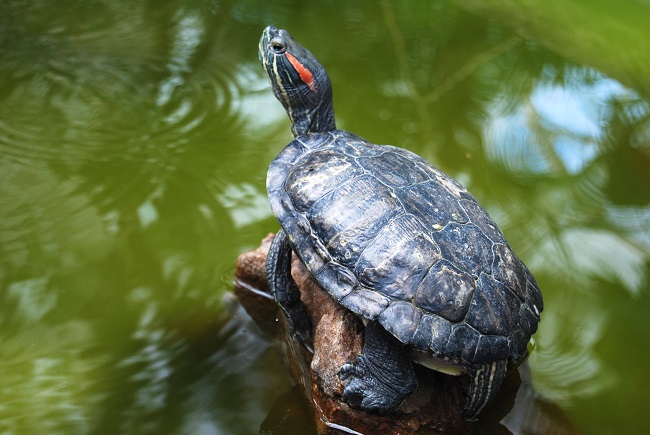Red-Eared Sliders are among the most popular pet turtles, loved for their vibrant coloration and engaging behaviors. If you’re considering adopting a Red-Eared Slider, understanding their lifespan and how to contribute to their longevity is essential.
This article provides a detailed exploration of the lifespan of Red-Eared Sliders, including factors that influence their life expectancy and tips to ensure they live a long, healthy life.

Typical Lifespan of a Red-Eared Slider
In a well-maintained captive environment, a Red-Eared Slider can live between 20 to 30 years on average. However, with optimal care, it’s not uncommon for these turtles to live up to 40 years or more. It’s important to remember that owning a Red-Eared Slider is a long-term commitment.
Factors Influencing the Lifespan of Red-Eared Sliders
Several factors contribute to the lifespan of a Red-Eared Slider. These include diet, habitat, genetics, and overall health care.
Diet and Lifespan
A balanced diet is key to the longevity of a Red-Eared Slider. A proper diet includes a mix of commercial turtle pellets, leafy greens, and occasional servings of aquatic insects or fish.
Habitat and Lifespan
The quality of a Red-Eared Slider’s habitat significantly influences its lifespan. These turtles require a clean, spacious environment with a proper basking area, access to UVB light, and a temperature-controlled setting to thrive.
Genetics and Lifespan
Just as in humans, genetics play a role in the lifespan of Red-Eared Sliders. Some turtles naturally have more robust health and longevity due to their genetic makeup.
Healthcare and Lifespan
Regular veterinary check-ups, prompt treatment of illnesses, and proper preventive care can greatly extend a Red-Eared Slider’s lifespan.
Ensuring a Long Life for Your Red-Eared Slider
By providing a nutrient-rich diet, a suitable and well-maintained habitat, regular vet care, and lots of love and attention, you can significantly enhance your Red-Eared Slider’s chances of a long, satisfying life.
Effects of Aging in Red-Eared Sliders
Just like humans and other animals, Red-Eared Sliders show signs of aging. These changes might include a slowdown in activity, changes in appetite, and potential health issues related to aging.
Regular vet check-ups are even more important for senior turtles to catch and address any potential health problems early.
Breeding and Lifespan of Red-Eared Sliders
Female Red-Eared Sliders that breed often might have a slightly reduced lifespan due to the physical demands of egg production and laying. It’s essential to provide additional care and nutrition to breeding females to support their health.
Environmental Enrichment and Lifespan
Providing your Red-Eared Slider with a stimulating environment can positively impact their mental health and overall longevity.
Environmental enrichment can include adding safe objects to explore, changing the layout of their enclosure periodically, or providing a variety of foods.
Proper Handling and Lifespan
Proper handling can also contribute to the lifespan of your Red-Eared Slider. Turtles can become stressed by improper handling, which can lead to health issues. Always handle your turtle gently, keep handling to a minimum, and never drop or roughly handle them.
The Importance of Responsible Pet Ownership
Owning a Red-Eared Slider, or any pet, is a significant responsibility. This commitment becomes even more pronounced when considering the long lifespan of these turtles.
As a pet owner, it’s your responsibility to provide the best care possible throughout your pet’s life.
Conclusion
Understanding the lifespan of a Red-Eared Slider and the factors influencing it can help you better cater to your pet’s needs and contribute to their longevity.
Remember, a pet turtle is a long-term commitment. With the right care and attention, your Red-Eared Slider can be a part of your family for many decades.
























